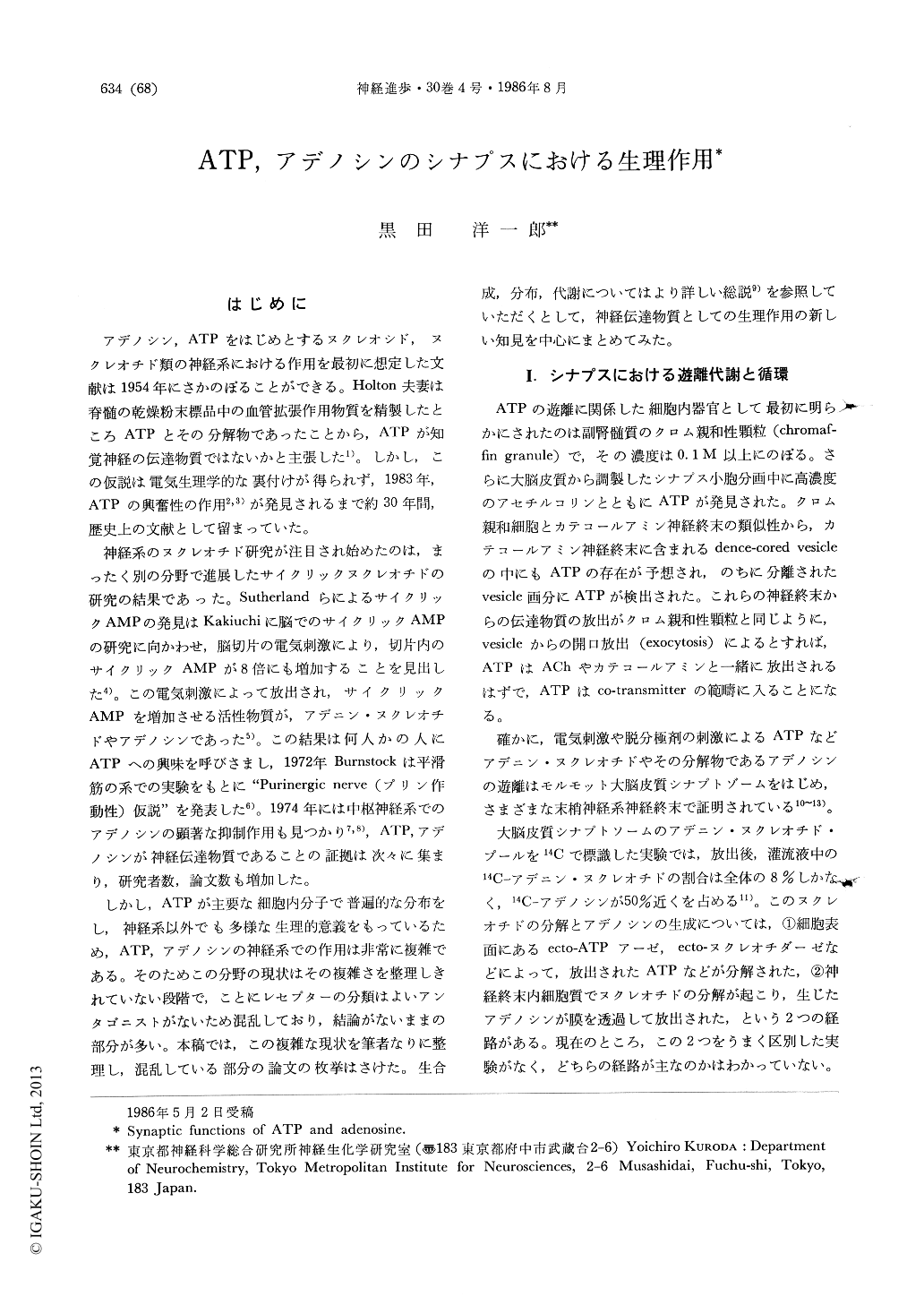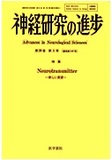Japanese
English
- 有料閲覧
- Abstract 文献概要
- 1ページ目 Look Inside
はじめに
アデノシン,ATPをはじめとするヌクレオシド,ヌクレオチド類の神経系における作用を最初に想定した文献は1954年にさかのぼることができる。Holton夫妻は脊髄の乾燥粉末標品中の血管拡張作用物質を精製したところATPとその分解物であったことから,ATPが知覚神経の伝達物質ではないかと主張した1)。しかし,この仮説は電気生理学的な裏付けが得られず,1983年,ATPの興奮性の作用2,3)が発見されるまで約30年間,歴史上の文献として留まっていた。
神経系のヌクレオチド研究が注目され始めたのは,まったく別の分野で進展したサイクリックヌクレオチドの研究の結果であった。SutherlandらによるサイクリックAMPの発見はKakiuchiに脳でのサイクリックAMPの研究に向かわせ,脳切片の電気刺激により,切片内のサイクリックAMPが8倍にも増加することを見出した4)。この電気刺激によって放出され,サイクリックAMPを増加させる活性物質が,アデニン・ヌクレオチドやアデノシンであった5)。この結果は何人かの人にATPへの興味を呼びさまし,1972年Burnstockは平滑筋の系での実験をもとに"Purinergic nerve(プリン作動性)仮説"を発表した6)。
ATP is released upon stimulation of presynaptic nerve and degraded to adenosine in the synaptic cleft. The ATP and adenosine derivatives have various physiological functions both presynaptic and postsynaptic site; inhibition or facilitation of transmitter release, activation of tyrosine hydroxy-lase, depolarization or hyperpolarization of post-synaptic membranes, modulation of ACh receptor sensitivity and so on. These functions are mediated by ATP or adenosine receptors, however, classifi-cation of receptor subtypes is not yet established, because of the lack of specific antagonists.

Copyright © 1986, Igaku-Shoin Ltd. All rights reserved.


